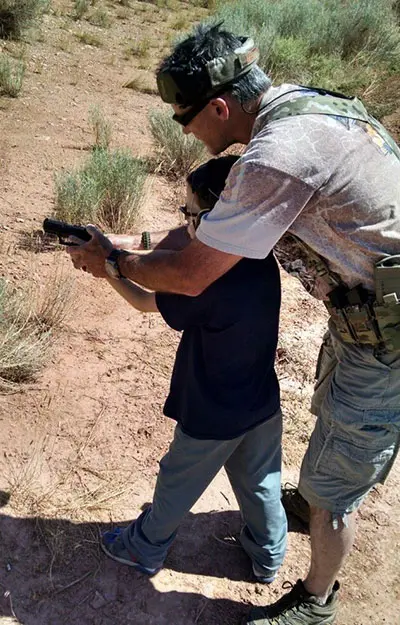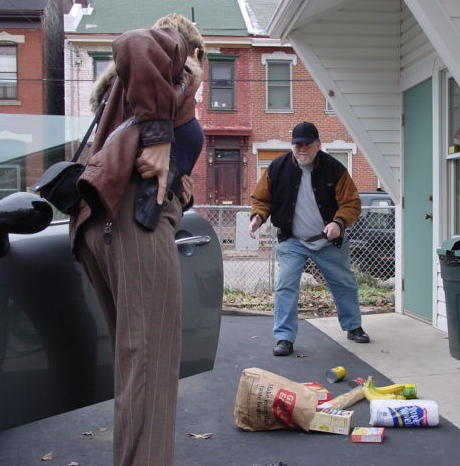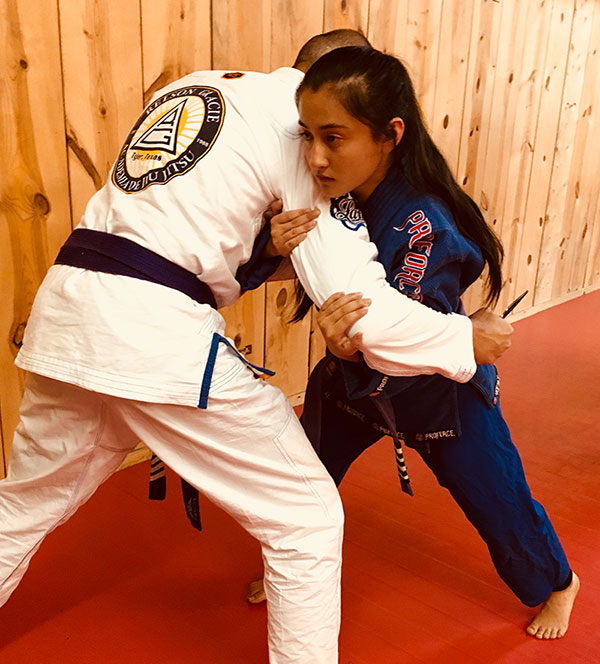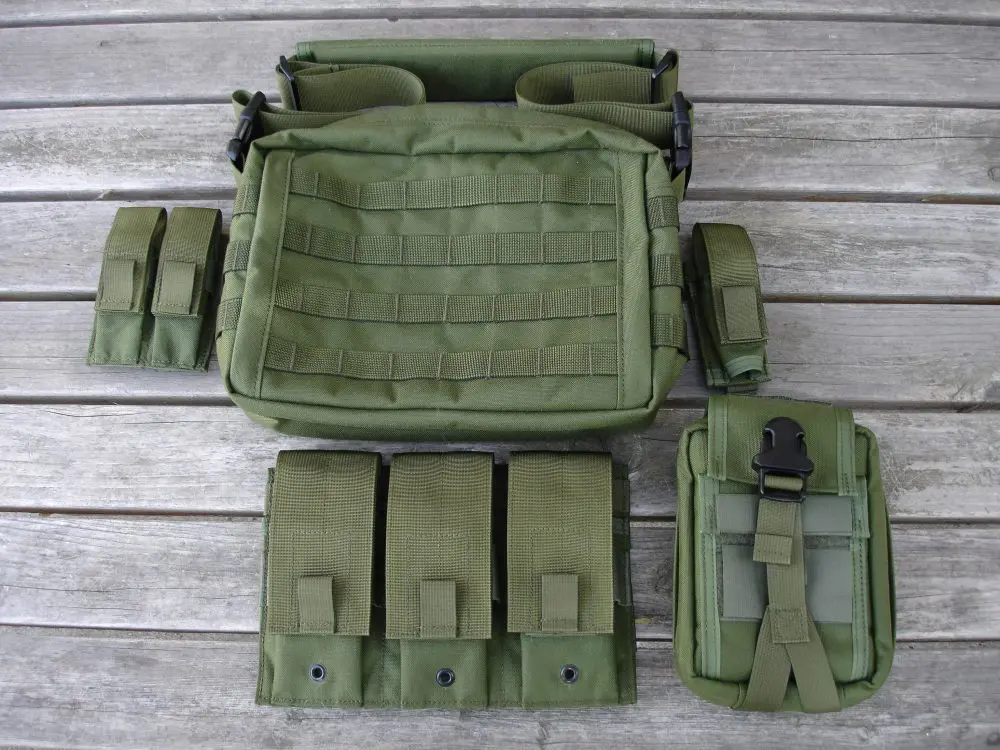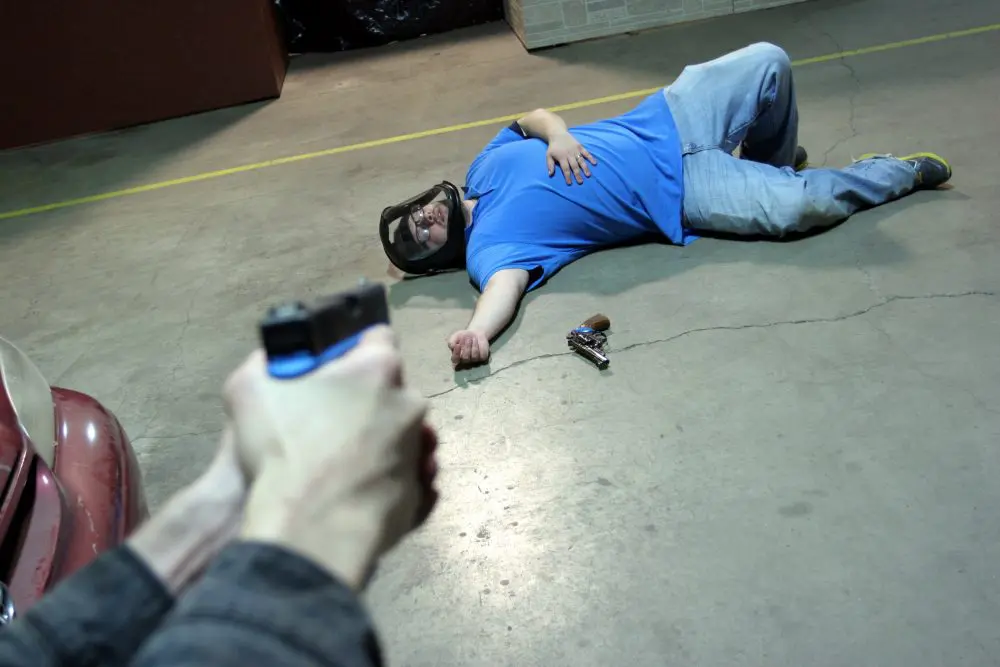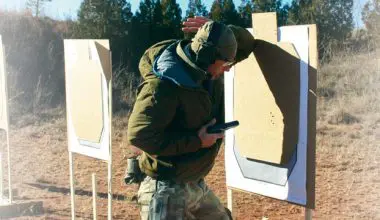Staying stable and flat, the action cycles back and forth. The only visible movement is brass arcing upward in a steady stream. It is a thing of beauty! Invariably, the average shooter sees this guy and thinks, “How does he do it? What is he doing that I’m not?” I’ve had the great privilege of shooting with a good many top hands and, although they might have differences in specific techniques, gear preferences, unit/ mission backgrounds, or general style of kung fu, there are some basics that all the pros have in common that make them who they are.
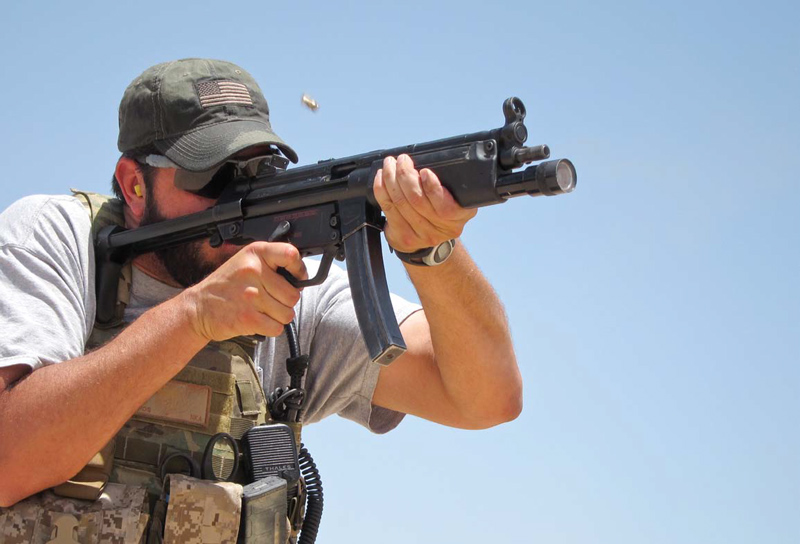
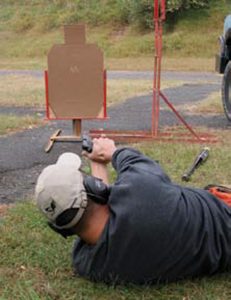
Table of Contents
IT LOOKS A LOT LIKE WORK
If you see one of the top fifth percentile training, chances are it will look like he is working. The casual shooter has almost no chance of getting dirty or breaking much sweat while at the range, unless they spill something on themselves. The pros end up pretty grimy, with grass-stained knees from working positions, sweat dripping from cap bills, and a healthy smear of lead, lube, and brass residue on their hands from filling magazines and keeping the gear oiled.
You can often tell how serious a person is by what time they do something. Running tracks, gyms, swimming pools and shooting ranges are packed with casual participants, hobbyists, and average enthusiasts at convenient times. Go to any 24-hour gym at 0430 hours and see the difference. The folks who get up early (or stay late) to get some training are generally there for a purpose. The guy who’s waiting with all his gear for the range to open probably has more than plinking on his agenda.
Many shooters pack up right about the time their core temperature is leaning toward perspiration or their muscles are getting a little fatigued. For them, shooting is about recreation and it’s simply more fun to call it a day while comfortable and having made a few good shots. The pro is just getting warmed up at this point and is about to start working through his training plan to make progress on whatever skills are on the agenda.
Likewise, the casual shooter is only going to shoot targets or attempt speeds that are easily accomplished. He’s likely to avoid tasks that look awkward or difficult— except for a token shot or three that are laughed off to a buddy.
The pro is balancing all the skill sets, sustaining each and honing in on whatever portion of his game needs improvement. This may require pushing to the point of failure, and the dedicated practitioner is unconcerned that others may have seen him throw a shot or fumble a manipulation, as long as that effort leads to better performance.
Just because they’re dedicated to training rather than simply shooting and it looks hard do not mean it must be drudgery. Every champion-level shooter or world-class instructor I’ve known is passionate about the pursuit, and this mindset fuels his efforts.
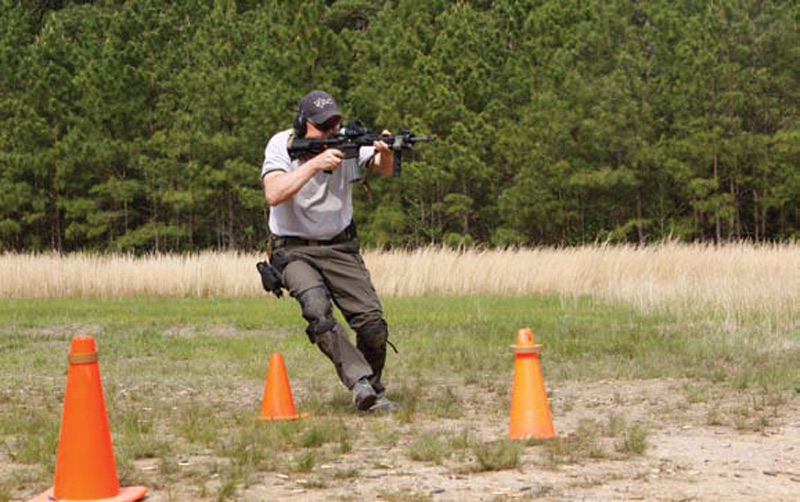
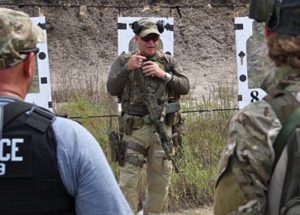
IT’S ABOUT THE BASICS
The pros all share a complete mastery of the fundamentals.
When you see the dazzling speed and seemingly effortless movements that result in centered hits, you’re witnessing the results of having beaten the core principles into bloody submission. The tenets of sight alignment and picture, trigger control, grip and positional support have been ingrained to a level where the dedicated practitioner can combine them on the move, at warp speed, in awkward positions, etc.
I have not trained with a single highend shooter who doesn’t continually circle back to reinforce the basics. Likewise, there is an appreciation of exercises and drills that isolate and challenge the fundamentals. Basic does not equal easy, which is where the novice often jumps the track. Practicing sight alignment and trigger control by firing single shots to a large bull or silhouette at seven yards is not challenging the basics, whereas engaging a one-inch square at that distance requires proper application of those fundamentals.
This complete confidence in the fundamentals is what allows the dedicated practitioner to pick up just about any weapon off the bench and run it at a level that draws a crowd. The uninitiated often mistake the tool in the pro’s hand or holster as having much more to do with the performance than is the case.
It costs more than money—professional- level performance costs time. Every shooter or instructor I know who has noteworthy abilities on the gun “coincidentally” has thousands of training hours under his belt. The vast majority of the shooting population has no real training, while the professional users have formal hours in the double digits, with pockets in triple digit territory.
As much as the mindset difference explained earlier, the devotion of time is what separates the supermen from the pack.
A study of pianists identified as prodigies made a similar correlation—each child identified as exceptional happened to have significantly more time spent in practice than those who were either average or slightly above. In his book Outliers: The Story of Success, Malcolm Gladwell suggests that truly exceptional or world-class performance in nearly any occupation, art or field of study requires the equivalent of 10,000 hours of practice/ training/experience.
Viewed that way, it is hard to expect much from users who requalify to minimum standards only on an annual basis, or enthusiasts who shoot once a month or so.
PURCHASING HABITS
Climbing to the top of the pyramid doesn’t necessarily have to cost a fortune, but the high-end talent do share some common traits.
All of them are more likely to spend hard-earned cash once on quality equipment rather than on every new weapon or gizmo that graces a magazine cover (most have already been through the experiential phase that burns through pocket cash acquiring marginal or substandard gear that is “almost as good as”). Some pros are easily identified by or associated with their well-worn training pistols and carbines, while others are perennially T&Eing something in their favored niche, but few are manic in flitting from one gun to the next the way that many aspiring shooters are.
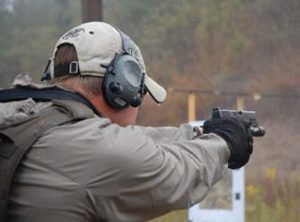
Nearly all of them budget for ammo, training, targetry and quality support equipment. Ammo is always the long pole in the tent, but is a cost of doing business that gets easier when accounted for on the front end and bought in bulk. It’s not a matter of chance that many of the best-known names in the industry spent at least phases of their career in units or organizations with a ready supply of training ammo, but there are plenty of less well-known shooters who’ve gotten to the top of the heap buying or reloading their own.
In some cases, this makes the shooter train smarter and get the most out of available resources, focusing hard on dry fire and simulation to offset a steady but measured diet of live rounds. Many mistakenly assume that “pro” shooters are getting paid to shoot and have warehouses of ammo at their disposal. Not so. Even the big names often are setting aside cash to fund the maintenance/ growth of their talent.
IT’S ALL ON PAPER
There are no accidental experts who showed up to plink one day and wound up setting world records. All the big dogs plan their training ahead of time, some of them months in advance. They generally have measurable training objectives for each session and religiously track their progress. They differ in the way or extent that they do so, but most record a lot of seemingly extraneous information from every training session.
A great example of this are the After Action Reviews (AARs) that S.W.A.T.’s own Pat Rogers has posted online for years following each class he conducts. In that case, the entire community has benefited and raised the collective bar from the trends identified and knowledge shared.
I know other instructors who had trained hard for years but didn’t cross into name recognition until they started actually tracking their performance. Much like the overweight who lose fat simply by counting calories, many shooters see a decided performance spike when training is tracked and the shooter begins to hold himself accountable.
THEY DON’T BUILD BEACH MUSCLES
“Hard shooters” are just that because they train to do hard things. You won’t find them endlessly seeking to shave a hundredth off their drawstroke when support-side capabilities are lacking. Likewise, they don’t obsess about printing teeny-tiny groups from the bench if accuracy from standing or kneeling has fallen off.
People like to be successful, and shooting in a public venue is a display of alpha male warrior prowess. It can be hard to work through unfamiliarity and awkwardness to gain repeatable skill with Bubba and his girlfriend watching from the next bench, but the road to real skill often requires a trip through Fumbletown.
THEY TALK ABOUT DIFFERENT STUFF
Stop by a public range or any internet forum, and the discussions predictably center around gear—what’s new, what’s “better,” what this or that special unit supposedly uses, etc.
The pros aren’t likely to spend any time on this stuff. It’s not that they are stoic, squinty-eyed killers in the spaghetti Western mold, it’s simply that such talk has limited value. They talk into the wee hours about drills, techniques that accomplish specific tasks, training they’ve seen or done, or great shots made by great shooters. They also talk gear, but the difference is in how a weapon or accessory directly relates to a capability.
To the casual gun buyer, none of that is probably very interesting, but the serious student could pre-empt many months of experimental effort by sitting in on one of these roundtables. I’ve sat at the end of the table listening as the collective tactical community had the state of the art advanced by experts sitting behind empty plates at the end of a match or training day.
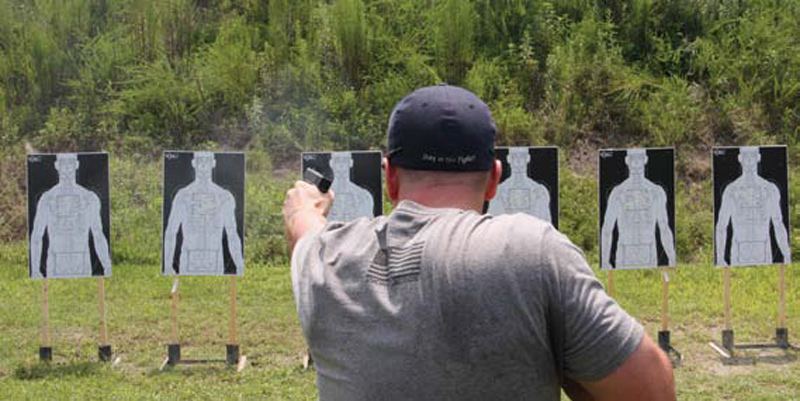
THEY AIN’T LUCKY
The real-deal guys know—as in know to the Nth degree—exactly what they can or can’t do with the carbine or secondary. This is directly related to the variety of hard training conducted and performance they’ve tracked.
This is in stark contrast to the average Joe who, while on his semi-annual trip to the range, declares every uncalled impact within the target an affirmation of his birthright as an “American rifleman,” and the misses are all attributed variously to the ammo, new widgetry on board that he’s trying out, unfair environmental conditions, Coriolis, and blah blah blah.
I’ve seen dedicated practitioners make some fantastic shots that were “inside of call,” but they generally knew that skill got them within spitting distance so that providence could take over.
The movie industry has conditioned the masses to expect phantasmagorical shooting performance from heroes irrespective of trajectory; available precision given in a combination of ammo, optic, and weapon; or the time and support available to make the shot.
The pros have the calibration necessary to know what it takes to make a given shot on demand or if the target is outside of a guaranteed hit given the circumstances. I know one trainer who can tell you to what degree his accuracy and speed are affected depending on his heart rate. This sounds extreme, but that level of familiarity with one’s skill leads to rock-solid confidence and the ability to tailor training objectives appropriately.
JOIN THEM
By applying some of the professionals’ principles above, those who need to shoot for the job can take the initial steps toward greater performance. Training harder and more often, isolating the fundamentals, tracking results, attempting what is difficult as opposed to what is already mastered, and seeking to know one’s capabilities in terms of precision and speed are all things that can be incorporated without much drama.
Soon enough, the shooter’s capabilities will leave the average plinker and minimally qualified gun-toter asking, “How do you do that?”
